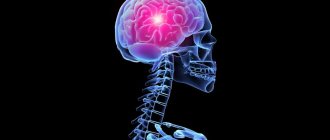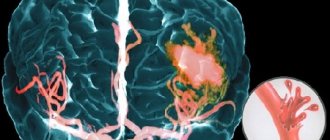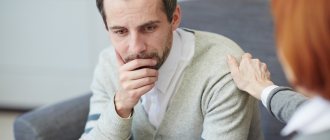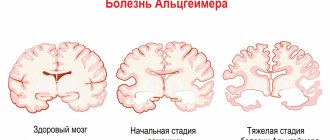Risk factors for stroke and heart attack
Planning a preventative treatment regimen is based on addressing risk factors that are largely similar for heart attack and stroke.
Metabolic risk factors include:
- dyslipidemia (impaired lipid metabolism - organic compounds, including fats and fat-like substances);
- arterial hypertension;
- obesity;
- metabolic syndrome;
- diabetes mellitus and other endocrinopathies;
- coagulopathies (diseases that develop as a result of disorders of the blood coagulation and anticoagulation systems).
Common markers of heart attack and stroke are:
- previous cardiovascular diseases;
- peripheral vascular pathology;
- calcium index;
- stress test results;
- hypertrophy (thickening of the wall) of the left ventricle.
Atherosclerotic stenosis of the carotid arteries and brain tumors increase the risk of stroke. The provoking factors of a heart attack are:
- atrial fibrillation;
- dysplasia (developmental disorder) of connective tissue;
- arteritis;
- diabetes.
Although the incidence of stroke is higher in men, it is more severe in women, and about half of deaths from stroke occur in women.
Make an appointment
Swelling of the hands. Causes and treatment of hand swelling
Fluid retention in soft tissues, including in the hands, causing them to swell or swell, can be explained by a number of reasons, in particular: cardiovascular diseases; kidney or liver diseases; diseases of endocrine organs; stagnation; poor diet, consuming large amounts of liquid, salt or sugar. Pregnancy can be a provoking factor for the appearance of edema in women. Treatment of hand swelling, which involves preventing the accumulation of lymphatic fluid, is carried out after a thorough examination and a clear diagnosis. An experienced osteopath can do this even without special equipment. Osteopathic treatment has virtually no contraindications and is therefore suitable for most patients.
Swelling of the hands is the result of a fluid called interstitium that accumulates in the hands. Edema can be unilateral or bilateral, and can develop gradually or suddenly. With immobility, the swelling usually increases, and with exercise or raising your arms, it decreases. The following causes of hand swelling can be identified: allergic reactions, when hand swelling was caused by some allergen; disturbances in the functioning of the central nervous system; with superior vena cava syndrome; with thrombophlebitis, rather painful swelling of the hands occurs; hand injuries can subsequently lead to swelling of the hands; burns; immunological diseases; intoxication that occurs as a result of an attack by a poisonous animal. In order to get rid of hand swelling, you should consult a doctor and follow all his instructions.
Signs of a stroke
To diagnose cerebral blood supply disorders, it is necessary to use stroke recognition techniques:
- When trying to smile, you need to pay attention to the corners of the mouth - in case of a stroke, it can be directed downwards, the smile looks crooked and asymmetrical;
- When trying to speak, it may be difficult to pronounce even the simplest words and sentences;
- When trying to raise both arms, asymmetry is observed;
- The protruding tongue falls to the side.
If at least one of the symptoms is positive, you must immediately call an ambulance. Under no circumstances should you give him water, feed him, lift him, or take him by handy transport to the nearest hospital, as this can cause harm.
Who is at risk
There are people who need to be especially wary of developing a stroke, as they are at risk.
Among them:
- Persons with hypertension.
- Patients with diabetes.
- Men and women over 65 years of age.
- People with abdominal obesity.
- Persons with a hereditary predisposition to vascular pathologies.
- Patients who have previously had a stroke or heart attack.
- Patients with diagnosed atherosclerosis.
- Women over 35 years of age taking oral contraceptives.
- Smokers.
- People suffering from heart rhythm disturbances.
- People with high cholesterol levels.
Most often, patients with the listed diagnoses are registered at the dispensary. Special mention should be made of people living in a state of chronic stress. Emotional stress negatively affects all systems of the body and can cause a stroke.
Help in the acute period
Which doctors are needed in the treatment of stroke depends on the period of the disease, but in any case, they must be experienced, highly qualified specialists who know how to properly provide assistance in this situation.
When diagnosing an ischemic stroke in a patient, the doctor’s goal is to restore blood supply with subsequent rehabilitation. This may require blood thinning medications or mechanical removal of the clot using a catheter. To remove atherosclerotic plaques, endarterectomy is performed, and to increase the diameter of blood vessels, plastic surgery with stenting is performed.
Preventing the formation of bedsores
Bedsores are formed under the influence of a number of factors:
- body overheating;
- unsuitable underwear and bed linen - injure the skin;
- illiterate care can provoke the appearance of long-term non-healing wounds;
- untimely treatment of abrasions, cuts, and other damage to the epidermis.
A bedsore is a source of infection entering the blood, which causes complications in the course of the disease. Bedsores appear in places where the skin is in constant contact with a hard surface. This is easy to avoid - you need to periodically change the position of your body. Do all manipulations of turning over and changing body position slowly and carefully. The client must be left in the selected position for 2 – 3 hours. Make sure that no folds form under the body and that the laundry does not bunch up.
Air baths are a good prevention of skin necrosis. Light massage of areas prone to bedsores (shoulder blades, hips, sacral area, heels, other areas) helps avoid damage to the epidermis. Before massage, it is best to lubricate the skin with camphor oil. The massage is done until the surface of the epidermis becomes slightly red, which indicates restoration of blood circulation.
How long to stay in hospital if you have a stroke
Poor blood circulation in the brain, in other words, stroke, treatment involves three stages:
- prehospital;
- stay in the intensive care unit;
- treatment in a general ward.
The length of stay of a patient in a hospital, according to treatment standards, is 21 days, provided the patient has no violations of vital functions, and 30 days in case of serious violations. When the length of a patient’s stay in a hospital is insufficient, a medical examination is carried out followed by the development of an individual course of rehabilitation.
All patients diagnosed with stroke are subject to hospitalization. The length of stay in intensive care depends on a number of factors, including:
- depression of vital functions;
- degree of damage to brain tissue. With a major stroke, patients stay in intensive care longer;
- the need for constant monitoring if there is a high risk of recurrent stroke;
- severity of the clinical picture;
- level of depression of consciousness and others.
Basic and differentiated therapy
Treatment of a patient in the intensive care unit involves basic and differentiated therapy.
Basic treatment is aimed at:
- fight against cerebral edema;
- restoration of normal functioning of the respiratory system;
- patient nutrition;
- maintaining hemodynamics at an acceptable level.
Differentiated therapy involves:
- normalization of arterial and intracranial pressure, elimination of cerebral edema after hemorrhagic stroke. In the first two days, a decision is made regarding the need for surgery. Neurosurgeons at the Yusupov Hospital daily perform surgical interventions to eliminate the consequences of stroke and save the lives of hundreds of patients. All manipulations are carried out using modern medical equipment using effective proven techniques;
- accelerating metabolic processes, improving blood circulation and increasing the resistance of brain tissue to hypoxia when diagnosed with ischemic stroke. The length of stay in intensive care directly depends on the timely and adequate course of treatment.
In most cases, young people recover much faster than older patients.
It is possible to transfer a victim from the intensive care unit to a general ward after meeting a number of criteria:
- the patient can breathe independently, without the support of devices;
- the patient is able to call a nurse or doctor for help;
- there is a stable level of heart rate and blood pressure;
- the possibility of bleeding is excluded.
Only after the patient's condition has stabilized can the doctor transfer the patient to the ward. In a hospital setting, various rehabilitation procedures are prescribed to quickly restore lost functions.
In the neurology department of the Yusupov Hospital, patients are not only developed an individual course of rehabilitation therapy, but also given psychological support.
If necessary, psychologists work with loved ones and relatives of the patient to teach them the basics of caring for a person who has suffered a stroke.
Diagnostic methods
It is important to quickly distinguish a stroke from other diseases that can lead to the development of similar symptoms. It is almost impossible to do this on your own, as well as to determine the type of vascular accident.
The main difference between an ischemic stroke is a gradual increase in symptoms that do not lead to loss of consciousness. With hemorrhagic hemorrhage, the patient passes out quickly. However, stroke does not always have a classic course. The disease may begin and progress atypically.
Diagnosis begins with examination of the patient. The doctor collects anamnesis and determines the presence of chronic diseases. Most often, you can get information not from the victim himself, but from his relatives. The doctor performs an ECG, determines the heart rate, takes a blood test, and measures blood pressure.
It is possible to make the correct diagnosis and obtain maximum information about the patient’s condition thanks to instrumental diagnostic methods. The best option is a CT scan of the brain. Performing an MRI is difficult because the procedure takes a long time. It takes about an hour. It is impossible to spend this amount of time diagnosing an acute stroke.
Computed tomography allows you to clarify the type of pathology, where it is concentrated, to understand how badly the brain is damaged, whether the ventricles are affected, etc. The main problem is that it is not always possible to perform a CT scan in the shortest possible time. In this case, doctors have to focus on the symptoms of the disease.
To determine the source of the stroke, the method of diffusion-weighted tomography (DWI) is used. The information will be received within a few minutes.
Other examination methods include:
- Lumbar puncture.
- Cerebral angiography.
- Magnetic resonance angiography. It is performed without the introduction of a contrast agent.
- Doppler ultrasound.
Once the diagnosis is made, the doctor will immediately begin treatment.
Recovery period
The rehabilitation period is aimed at restoring lost functions and improving the quality of life of patients who have suffered a stroke. The doctor develops a rehabilitation program individually for each patient, taking into account the scale of the vascular accident, age, comorbid pathology, etc.
In case of strokes, doctors assign a special role to the prevention of recurrent strokes, which includes proper nutrition, giving up bad habits, eliminating excess weight, and regular monitoring by a doctor.
Is full recovery possible after a stroke?
The patient’s relatives play a significant role in the rehabilitation of a patient after a stroke. It depends on their attention, care, patience and correct actions whether the patient’s lost functions can return.
The recovery process after a stroke is a difficult period, both for the patient himself and for his loved ones. The rehabilitation time depends, first of all, on the degree of damage to brain tissue. Patients may have impaired coordination of movements, mobility of limbs, speech, memory, hearing, and vision.
The patient’s persistence and positive attitude can speed up the recovery time of lost functions.
An experienced team of doctors will speed up the rehabilitation process thanks to a well-designed individual treatment program.
Levels of recovery after stroke
After hemorrhagic and ischemic strokes, there are three levels of recovery:
- the first is the highest. We are talking about the complete restoration of lost functions to their original state. This option is possible in the absence of complete death of nerve cells in a region of the brain;
- the second level is compensation. The early stage of recovery, usually in the first six months after a stroke. Lost functions are compensated by the involvement of new structures and functional restructuring.
- The third level involves readaptation, that is, adaptation to the emerging defect. The patient’s relatives and friends play a significant role in this process. They are the ones who help the patient learn to live with the emerging defect.
Specialists at the Yusupov Hospital, if necessary, work with the patient’s relatives, teaching them the specifics of care, as well as providing them with psychological support.
How does a hemorrhagic stroke occur?
Cerebral hemorrhage during a stroke is a spontaneous phenomenon. The functioning of the brain requires large amounts of oxygen from the blood. Nutrition is produced thanks to two carotid and two vertebral arteries, which form a circle between themselves passing through the base of the brain.
When a vessel is damaged, acute blood failure occurs, which is necessarily compensated by healthy vessels. However, over time, the effectiveness of such a mutual assistance system decreases. The appearance of cerebral hemorrhage during a hemorrhagic stroke is caused by sudden ruptures of the vascular walls or their increased permeability due to other chronic diseases.
During a cerebral hemorrhage, the death of brain cells that are damaged by blood contact occurs. In nearby areas of the brain, oxygen deficiency begins, since blood does not reach them and cannot move further through the vascular system.
Prognosis for recovery after stroke
Favorable factors for recovery after a stroke include:
- timely early start of rehabilitation therapy;
- spontaneous early recovery of lost functions.
Among the unfavorable factors of recovery after a stroke are:
- advanced age of the patient;
- large area of brain tissue damage;
- poor blood circulation around the affected brain tissue;
- damage to cells in functionally important areas of the brain.
Basics of Stroke Recovery
In the process of rehabilitation, the positive attitude of the patient himself and his desire to return to independent life are important. Psychological support and assistance from the patient’s relatives plays a huge role. You can make an appointment with a neurologist by phone.
Memory recovery after stroke
Treatment of patients after a stroke takes place in the neurological department. Memory restoration depends on many factors: the size of the area of brain damage, the location of the damage, and the timeliness of medical care. The faster blood circulation in the brain is restored, the greater the chance of memory recovery after a stroke.
Memory restoration after a stroke is possible with the participation of several specialists - a neurophysiologist, psychologist, neuropsychologist, neuropsychiatrist. Help for a patient after a stroke is provided at the rehabilitation clinic of the Yusupov Hospital. In the hospital, the patient is treated according to an individual recovery program; many specialists take part in the development of such a program. When developing the program, the patient’s health condition, the severity of brain damage, and memory impairment are taken into account.
In some cases, it takes several years to restore memory and speech; during recovery, the doctor prescribes medication, a special diet, various trainings - color therapy, rhythm therapy, music therapy and others. Memory restoration at home is not always successful due to the lack of a training program and knowledge in the field of rehabilitation of patients after a stroke.
You can make an appointment with a neurologist at the Yusupov Hospital by phone. Consultation with a specialist, full patient care, rehabilitation using innovative equipment, massages and exercises will help the patient regain full memory.
Restoring a hand after a stroke
A positive attitude and support from family have an impact on rapid recovery from illness. Partial paralysis of the arm is a common occurrence after a stroke and is characterized by stiffness of movement and limited motor ability of the arm. Functional paresis (partial paralysis) refers to neurological syndromes, caused by disruption of the nervous system, damage to the nervous system pathway due to damage to the cerebral cortex after a stroke. Paralysis of the arm is the complete absence of voluntary movements of the limb.
Recovery from a stroke may involve the hand or the entire limb. With partial paralysis, the ability to move the arm or hand freely is impaired; the person cannot fully care for himself or perform basic actions. To restore motor ability, the patient must perform daily exercises for finger motor skills and limb motor skills.
The rehabilitation process of restoring motor activity of the limbs requires patience from the patient and a lot of work - this will allow you to return to a full life after a stroke. You can make an appointment with a neurologist by phone. The rehabilitation doctor will develop individual exercises for the patient, the patient will be under constant medical supervision and receive qualified assistance from specialists.
Swelling of the hands
Swelling in the hands can occur in people of any age, from the young to the very old. They often appear due to minor disorders in the body and go away on their own, but sometimes they can be signs of serious diseases. You should be especially wary if the swelling of the hands is asymmetrical: it occurs only on one hand or is much more pronounced on one hand than on the other.
Causes of swelling of the hands and distinctive features of pathologies accompanied by swelling of the hands
Swelling of the hands can appear with superior vena cava syndrome (compression of this large vessel). With this syndrome, swelling may occur in the face, neck, upper torso and arms. The skin of these sections is bluish; the bluishness intensifies even more when the body bends forward. There may also be dilatation of the superficial veins of the neck, torso, and arms. Some patients develop “spider veins” on their chest and back as a result of dilated capillaries. Due to increased blood pressure in the venous system, some patients may complain of bleeding from the nose, throat (esophagus), and headaches. decreased vision, rushes of blood to the head when bending, auditory hallucinations. Swelling of the vocal cords may develop, accompanied by hoarseness.
Neurological diseases can cause swelling in the hands. In patients who have suffered a stroke complicated by paralysis of the upper limbs, capillary permeability increases. In this case, moderate swelling of the paralyzed limbs appears, the nutrition of the skin is quickly disrupted, it becomes thinner, and purulent infections can occur. The same swelling can occur in patients with syringomyelia and polio.
Unilateral swelling of the arms can also occur due to acute thrombosis of the subclavian vein. This pathology may be preceded by a long period of chronic venous insufficiency. It manifests itself as increased fatigue, cyanosis of the hand, and a feeling of heaviness in the hand after physical activity. As a rule, this disease occurs in young men involved in sports and physical labor. Strong physical activity provokes the development of acute thrombosis. And thrombosis itself can be suspected by the rapidly occurring dense swelling of the arm from the shoulder to the hand. Patients feel a feeling of fullness, heaviness and burning in the affected limb. The arm is cyanotic, its circumference is much larger than that of a healthy one. When pressing with a finger on the area of edema, the hole does not remain. Over time, the swelling may subside, and the disease becomes chronic. However, periodically physical activity can provoke exacerbations of the disease and a return of symptoms.
In older people, the most common cause of unilateral swelling of the arms may be compression of the subclavian vein by a tumor. Compared to acute thrombosis of the subclavian vein, the swelling is less pronounced, increases gradually, and, as a rule, there is no pain in the affected arm. Simultaneously with compression of the subclavian vein by the tumor process, compression of the innominate vein may also occur. This is manifested by swelling and cyanosis of half the face and neck.
The cause of swelling of the hands may be inflammatory damage to the lymphatic vessels (lymphangitis). As a rule, it is a complication of a purulent-inflammatory disease of the hand. This pathology is manifested by general symptoms in the form of fever, malaise and local swelling of the arm, redness, and local increase in body temperature. Along the course of the lymphatic vessels, painful compaction-strands are felt. With lymphangitis, there is always regional enlargement of the lymph nodes.
Swelling of the arm in women may occur after breast removal. The main reason for this is impaired lymphatic drainage.
Middle-aged women may experience causeless swelling of the arms and legs. They are more pronounced in hot weather. On the hands and eyelids, such swelling occurs in the morning, and on the legs it is more pronounced in the evening. At the same time, all analyzes and results of instrumental research methods will remain within normal limits.
Taking certain medications - estrogens, mineralocorticoids, vasodilators - can provoke the appearance of hand swelling.
Sometimes swelling in the arms can occur along with swelling in the legs during pregnancy and premenstrual syndrome.
Swelling of the hands can be combined with swelling of the legs, face, and torso and occur as a result of cardiovascular, endocrine, and renal pathologies.
Treatment of hand swelling
You can independently reduce the severity of swelling of both hands with the help of diuretics (for example, veroshpiron). Diuretics such as Lasix and furosemide should not be used (especially for a long time), as they promote the removal of potassium from the body, and this can negatively affect the functioning of the cardiovascular system.
You can also resort to the help of folk diuretics - drinking watermelon pulp, green tea, burdock root decoction, infusion of cornflower flowers, decoction of lingonberry leaves. If possible, it is necessary to limit fluid intake so that it does not accumulate in the tissues of the hands.
If you have swelling on one arm, then you should not self-medicate. It is necessary to immediately consult a doctor to determine the cause of this disorder and select treatment.
Comments 1
From May 22 to June 3, Dr. Komarovsky will be in Finland!
SDK: Viral croup.
Meeting with a pediatric neurosurgeon - cephalohematoma. Choosing slings and carriers for children. Preparing “orange” cauliflower.
Factors influencing the speed and quality of rehabilitation
There are many factors that influence the speed of recovery after a stroke, so predicting the duration of rehabilitation and likely results is quite difficult.
How long rehabilitation after a stroke will last depends on the individual parameters for each person, as well as on other factors:
- volume of damage: an extensive stroke significantly worsens the severity of the patient’s condition, and also causes many neurological complications that adversely affect the timing of recovery and its quality;
- patient’s age: the older the victim, the longer the recovery;
- localization of damage: circulatory disorders of deep structures are difficult to treat;
- type of stroke: hemorrhagic strokes are less common, but occur in a more aggressive form, and also have a high mortality rate, although the prognosis for rehabilitation is more favorable than for ischemic stroke;
- caused by disorders: the presence of multiple cerebral symptoms, comatose states, severe paralysis and sensory disturbances give an unfavorable prognosis for recovery;
- timeliness of therapy: the most positive results of therapy can be achieved by starting treatment measures in the first 4 hours after the onset of the first symptoms; seeking help at a later time worsens the prognosis;
- compliance with medical recommendations: after the patient is discharged from the medical institution, the patient is given recommendations that can improve the quality of life, prevent the formation of relapse and negative complications.
The severity of the lesion has the greatest impact on the likelihood of restoration of lost functions and the timing of rehabilitation. With extensive strokes, violations of the most important functions are observed, even if the prescribed rehabilitation program is followed, the prognosis is rather disappointing. The greatest difficulties arise with the complete return of speech and motor functions. Close relatives who will devote a lot of time to special activities with the patient can positively influence the situation.
Diagnostic methods
It is important to quickly distinguish a stroke from other diseases that can lead to the development of similar symptoms. It is almost impossible to do this on your own, as well as to determine the type of vascular accident.
The main difference between an ischemic stroke is a gradual increase in symptoms that do not lead to loss of consciousness. With hemorrhagic hemorrhage, the patient passes out quickly. However, stroke does not always have a classic course. The disease may begin and progress atypically.
Diagnosis begins with examination of the patient. The doctor collects anamnesis and determines the presence of chronic diseases. Most often, you can get information not from the victim himself, but from his relatives. The doctor performs an ECG, determines the heart rate, takes a blood test, and measures blood pressure.
It is possible to make the correct diagnosis and obtain maximum information about the patient’s condition thanks to instrumental diagnostic methods. The best option is a CT scan of the brain. Performing an MRI is difficult because the procedure takes a long time. It takes about an hour. It is impossible to spend this amount of time diagnosing an acute stroke.
Computed tomography allows you to clarify the type of pathology, where it is concentrated, to understand how badly the brain is damaged, whether the ventricles are affected, etc. The main problem is that it is not always possible to perform a CT scan in the shortest possible time. In this case, doctors have to focus on the symptoms of the disease.
To determine the source of the stroke, the method of diffusion-weighted tomography (DWI) is used. The information will be received within a few minutes.
Other examination methods include:
- Lumbar puncture.
- Cerebral angiography.
- Magnetic resonance angiography. It is performed without the introduction of a contrast agent.
- Doppler ultrasound.
Once the diagnosis is made, the doctor will immediately begin treatment.
Stroke Prevention
Prevention of heart attack and stroke in women and men are links in one chain of measures that prevent disability and death in people suffering from cardiovascular diseases.
Cardiologists and neurologists at the Yusupov Hospital use modern diagnostic methods to examine patients, allowing them to identify risk factors for vascular diseases and take measures aimed at preventing diseases. Medicines for the prevention of stroke and heart attack allow you to control the course of the disease, reduce the incidence of acute cardiovascular crises, and the likelihood of complications.
Chance of full recovery after stroke
The rehabilitation period is individual; for some, a few months are enough; for others, it will take years to achieve a positive result. The earlier restoration procedures are started, the more favorable the prognosis. At the same time, the patient’s attitude and focus on results is important; The greater a person’s desire to return to a full life, the more effective the classes and exercises.
At the Yusupov Hospital, a well-coordinated team of professionals (neurologists, rehabilitation specialists, therapists, cardiologists, speech therapists, psychologists) takes part in the rehabilitation of patients after a stroke. Doctors create an individual program for each patient, aimed at the best possible result, observing the following principles:
- early start of restorative procedures;
- systematicity and duration of events;
- complexity of procedures;
- multidisciplinarity of classes;
- compliance of procedures with the patient’s condition;
- active interaction between doctors and the patient and his family.
You can make an appointment with the doctors at the Yusupov Hospital and find out how much rehabilitation after a stroke costs by calling.
Who is at risk
There are people who need to be especially wary of developing a stroke, as they are at risk.
Among them:
- Persons with hypertension.
- Patients with diabetes.
- Men and women over 65 years of age.
- People with abdominal obesity.
- Persons with a hereditary predisposition to vascular pathologies.
- Patients who have previously had a stroke or heart attack.
- Patients with diagnosed atherosclerosis.
- Women over 35 years of age taking oral contraceptives.
- Smokers.
- People suffering from heart rhythm disturbances.
- People with high cholesterol levels.
Most often, patients with the listed diagnoses are registered at the dispensary. Special mention should be made of people living in a state of chronic stress. Emotional stress negatively affects all systems of the body and can cause a stroke.
Restoring everyday skills
All everyday skills should be developed under the supervision of a loved one, an assistant who will control the patient’s movements and, if necessary, support and guide his hand.
Nutrition
To prevent spoons and forks from slipping out of the patient’s hand, you can wrap their handles with thin foam rubber. If paralysis/paresis affects the leading hand, then when eating, you should help the patient - support and guide his hand towards the mouth.
Using the tap and washing your face
A chair should be placed in front of the sink so that the patient can wash while sitting. He should open the tap with the affected hand and, if necessary, should be assisted by guiding his hand towards the tap. In this case, the patient should check the temperature of the water with a healthy hand with preserved sensitivity. Once a comfortable temperature has been established, the patient should attempt to wash the affected hand.
Combing
You should choose combs made from non-slip materials, or wrap the comb handle with thin foam rubber. If possible, you should try to comb your hair with the hand with impaired function.
Dressing
Clothes (jacket, shirt) should be loose, fastened with buttons. It is placed on the knees, between which the sleeve for the affected arm is lightly fixed. With the help of the healthy one, she gradually moves into the sleeve.
Speech rehabilitation
To restore speech skills, the patient will need to consult a speech therapist, who will prescribe exercises for training facial muscles, language, as well as help and certain behavior from loved ones.
The patient's relatives should constantly communicate with him, while pronouncing words slowly and clearly, avoiding complex long sentences. The patient must first train the pronunciation of individual sounds, gradually moving on to syllables and words. Sometimes it is easier for a person to pronounce words in a sing-song manner than in the usual way.
Recommended exercises:
- stretch out your lips like a tube and “bar your teeth”;
- lick and lightly bite lips;
- stick your tongue out of your mouth, stroke your cheeks with your tongue, “click” your tongue;
- puff out one's cheeks;
- smile, trying to use both sides of the mouth symmetrically.
General rules of care
The recovery period after a stroke is divided into early (up to 6 months), late (6-12 months) and residual effects (after 1 year). Ideally, in the early recovery period, the patient is recommended to be treated in palliative hospitals, sanatoriums, in the late recovery period and during the period of residual effects - in a day hospital, rehabilitation department, or by a visiting team at home. In reality, most often patients are at home after an acute period of stroke, and the main question that arises among their loved ones is where to begin rehabilitation. One of the main tasks of the rehabilitation process is to create comfortable conditions that promote relief and speedy recovery.
Preparing the premises
To exclude the impact of external traumatic factors (light, sound, temperature stimuli) on the patient’s psyche, he should be placed in a bright, well-ventilated room, where no extraneous noise can be heard from the street. The room should maintain a comfortable temperature within +18-22 °C.
The room should not be cluttered with furniture or objects that are easily moved out of place. A good alternative to a regular bed would be a functional one - with adjustable height and backrest position, side rails, and lockable wheels. Near the bed you need to place a bedside table with hygiene items, a blood pressure monitor, other necessary things, a wheelchair or other mobility aids (walkers, canes), a portable toilet or a bedpan.
If the person caring for the patient is not always with him, you can equip the room with a call button that the patient can easily reach, or replace it with a regular bell. Patients who can move independently or are beginning to train the skill of walking will find handrails along the walls very useful, and anti-slip mats in the bathroom will prevent injuries.
Body hygiene and bedsore prevention
Adequate prevention of bedsores can prevent their occurrence in 80% of cases.
Preventive measures:
- a special anti-bedsore or foam mattress with a thickness of at least 10 cm;
- soft bed linen without wrinkles;
- special cushions or pads made of foam rubber for vulnerable parts of the body (back of the head, shoulder blades, elbows, sacrum, heels, ankles);
- changing body position every 2-3 hours;
- comfortable underwear;
- prevention of skin trauma - carefully moving or turning over the patient.
It is important to carry out proper hygiene measures and skin care. At least once a day, during hygienic procedures, you should examine the entire surface of the patient’s body, vulnerable areas - every time you turn over. You should use waterproof diapers and diapers and change them as needed. It is necessary to wash the patient with warm water without soap after each bowel movement, washing with soap - no more than once a day, it is better to use liquid soap. After washing, the skin is thoroughly dried with a soft towel. For dry skin, moisturizing and nourishing creams are used; for diaper rash, powders without talc are used.
Nutrition
Food should be comfortable to swallow and easily digestible. The patient needs a sufficient amount of fluid - at least 1.5 liters. in the absence of restrictions. Drinking should not be limited even with urinary incontinence, since with a lack of fluid, urine becomes concentrated and irritates the skin.
The patient's diet should contain a sufficient amount of protein. It can be a soufflé, minced chicken, beef, rabbit, or fish. Patients who have difficulty chewing or swallowing semi-solid foods may be given meat or fish broth.
The menu should include dishes rich in vitamin C, iron, zinc, fermented milk products, fruits and vegetables.
Food is prepared boiled or baked and must be freshly prepared. You should not eat fried foods, pickles, smoked foods, spicy foods, canned food, fast food, carbonated and sweet drinks. You need to eat 4-5 times a day, in small portions.
Memory training
Memory and intellectual function training occurs simultaneously with speech restoration. The patient should try to repeat the syllables, words, phrases spoken by the assistant, gradually increasing the interval between pronouncing the word and repetition.
Board games, composing stories based on pictures, solving crossword puzzles, and even simple conversations help restore thinking abilities. Near each item in the room you can put a card with its name. As cognitive functions are restored, the patient can read, watch films, and discuss their content.










